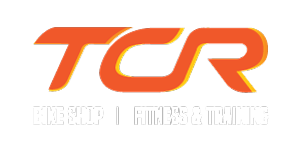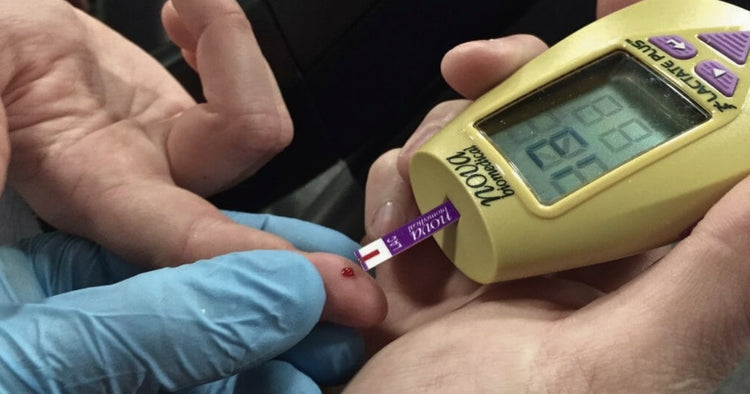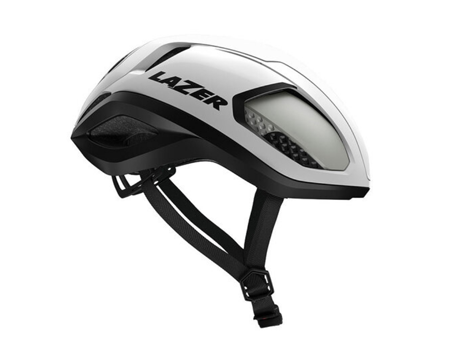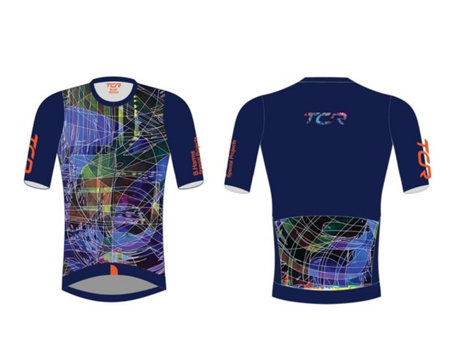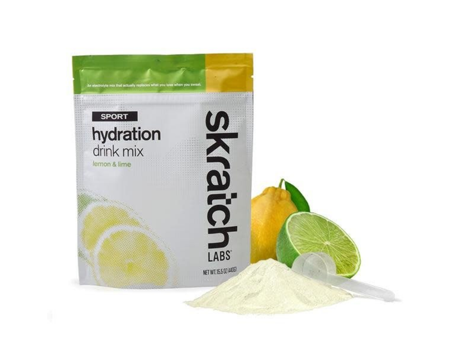To feel or not to feel….the burn
Whether you're an Ironman triathlete or a once-a-week gym goer, you've probably experienced "the burn" during a hard workout.
Whenever you push a little bit past your limits, that familiar ache will find its way into your muscles, and you know your ability to maintain that exercise intensity will soon come to an end. But have you ever wondered what's behind that sensation?
You might think that going as hard as you can in the gym is going to help you lose weight or reach your goals faster, but intense exercise doesn't necessarily mean you're burning body fat or building muscle mass optimally.
In fact, a better understanding of what “feel the burn” actually means can help you train smarter, lose fat more efficiently, and improve your overall performance.
[PS - If you’re looking for Blood Lactate Testing in Calgary, click the link to check out our service here, and let the efficient fat burning begin.]

The Science Behind the Burn
The burn you feel in your legs or arms when you’re putting in a tough effort is the direct result of your body producing lactate. While many in the health and fitness space associate lactate strictly with muscle fatigue, it’s actually part of a complex metabolic process that plays a pivotal role in providing energy during exercise.
It’s probably easiest to understand blood lactate concentration by thinking of how two different types of runners — a marathoner and a sprinter — would use their energy. Both runners use distinctly different supplies of energy from their bodies because their exercise intensities are at different ends of the spectrum.
The two different ways your body produces energy are through aerobic metabolism and anaerobic metabolism.
1. Aerobic Metabolism: The Marathoner
- Fuel Source: Primarily fat, but also carbohydrates.
- Oxygen: Required.
- Duration: Sustained, long-term energy.
- Example: Think of a runner holding a steady pace with a long, easy jog.
This type of aerobic activity will call for a low to moderate exercise intensity, nowhere near “feeling the burn.” In the midst of this type of effort, your body is running off a higher percentage of fat and has enough oxygen to produce energy. The metabolic process is very efficient, and that's why you can keep going at this exercise intensity for extended periods.
2. Anaerobic Metabolism: The Sprinter
- Fuel Source: Mainly carbohydrates, and a little bit of fat.
- Oxygen: Not required.
- Duration: Short bursts of high energy.
- Example: Imagine a short-distance runner accelerating quickly off the line, sprinting at full speed.
During high-intensity activities, your body demands energy faster than the aerobic system can supply. So, it switches to its anaerobic system, which doesn't require oxygen and runs more off carbohydrates than fat. However, your body can't sustain this type of high-intensity, anaerobic threshold effort for very long. This is where lactate is produced and you begin to feel the burn associated with a high blood lactate concentration.
Exercise Intensity and Blood Lactate Accumulation

At lower intensities, when it's running more off of fat than carbohydrates, your body will clear its blood lactate concentration efficiently. But as you push harder, your blood lactate levels accumulate faster than your body can clear it, leading to an increase of lactate production, and therefore, an increase in blood lactate concentration.
With high-intensity exercise, you're moving closer to your anaerobic threshold and, as a result, your anaerobic system works harder. The lactate increases to levels that are unsustainable.
Imagine filling a bathtub with water. At first, the water will flow down the drain as fast as it's poured in. But if you start pouring water more quickly (increasing exercise intensity), the drain (your body's ability to clear lactate) can't keep up, and the tub begins to fill.
The Two Blood Lactate Thresholds
Staying with the bathtub analogy, there are two important moments to consider as the tub fills with water.
Lactate Threshold 1 (LT1)
The first threshold is when the water in the tub is never over-flowing. You may have to add water to cover your legs as water is draining a bit faster than it is coming in. At this rate, you can run, walk and ride for hours. LT1 is your fastest pace without feeling “the burn.”
Lactate Threshold 2 (LT2)
The second threshold is a delicate steady-state. The water is filling the tub but it is also draining at an equal rate. It’s a fine line to hold as you don’t want the tub to overflow. This is your second blood lactate threshold. LT2 can be held for 1-2 hours depending on your training status and history. There is a “burn” but it is tolerable.
It's at these two points that blood lactate testing plays its pivotal role. By gauging how much lactate is in your blood at varying exercise intensities, the two essential blood lactate thresholds — LT1 and LT2 — can be pinpointed.
Once you've deciphered your lactate thresholds, you can use this information to optimize your training, and begin to effectively boost metabolism and reap other benefits like increased muscle mass and improved athletic performance.
Blood Lactate Threshold Testing and the Fat-Burning Connection
So, how do you collect this seemingly magical information and begin burning body fat more efficiently?
It all begins with a simple test.

Lasting between 30 and 40 minutes, the typical blood lactate threshold test works like this:
- You'll wear a heart rate monitor and begin some light aerobic exercise, running or cycling at a gentle pace on a stationary bike for 20 min.
- Every few minutes, the exercise intensity will increase as more resistance is added.
- At each resistance level, a technician will take small blood samples from your finger.
- These blood samples are analyzed to measure your blood lactate accumulation.
- Using this data, a detailed graph is created that indicates the speed, power/speed and heart rate for your two thresholds.
With your blood lactate thresholds decoded, you can now create a customized exercise plan that will help you burn body fat and reach your fitness goals.
Zone 2 is About More Than Reduced Belly Fat
At the moment, there's a popular buzzword in the world of fitness, exercise and fat loss. Anyone looking into the training plan described above will undoubtedly come across the term "Zone 2" in their reading.
While YouTube videos promising to help you burn belly fat and increase general fat loss through intense workouts and fewer calories are mostly full of exaggeration at best (and misleading information at worst), there's a lot of truth associated with the benefits of Zone 2 training.
The podcasts of influential health and fitness experts like Peter Attia and Andrew Huberman have been promoting the benefits of Zone 2 training for the past few years, often championing the research findings of endurance sports physiologist Iñigo San Millán.
According to San Millán, consistent exercise at the aerobic level we previously mentioned — effort that burns more fat than carbohydrates and comes near your LT1 without crossing over — not only contributes to fat loss, it also stimulates mitochondrial function and enhances overall fitness in a way that makes your body increasingly better at burning fat and using up fat storage in your body.
The Truth About Zone 2

The term "Zone 2" being associated with this level of effort isn't 100% accurate, however. Training plans and exercise are often categorized into five zones of intensity based on maximum heart rate. While exercising in Zone 2 of these systems will likely mean your body is burning fat as its primary energy source, it's not certain. Heart rate zones are only estimates.
For instance, a person leading a sedentary lifestyle could share the same maximum heart rate as an athlete. However, it's extremely unlikely that a person who doesn't exercise would be able to maintain the same speed, power or heart rate numbers as a fitness enthusiast while reaching their lactic thresholds.
Optimizing Exercise to Lose Body Fat
That's why a lactate threshold test is so important to directing a customized training plan for fat burning. Because you burn the most fat just below LT1 and you condition your body to do more at that intensity the more time you spend in it, exercising in that zone is crucial. And the only way you can know where that zone is for you is to take the test.
Should You Only Train Below LT1 or in Zone 2 to Burn Fat?
After hearing all the benefits of working out at this intensity — increased fat oxidation, better endurance at resting levels, improved body composition, enhanced capillarization, less likelihood of injury and higher density mitochondria — you could be forgiven for assuming you should focus all of your workouts just below LT1 or in the so-called Zone 2.
Unfortunately, it's just not that simple. Think of this type of training as driving a hybrid car in "eco mode." You're not in a race; you're cruising, optimizing your fuel efficiency. Yes, when you're in this zone, you're training your body to harness fat as its primary fuel. However, this doesn't mean you should never hit the gas pedal, and move past your lactate thresholds.
Here's the twist: during exercise, lactate production is primarily from fast-twitch muscle fibers, the ones activated above LT1 and at LT2. But lactate clearance? That's the job of the slow-twitch fibers. Hence, to enhance your lactate clearance capacity, and train your body to become better at using its fat storage, you need a balance of both workout types.
Otherwise, you'll always be driving your body in "eco mode" without the ability to improve its fat breakdown function.
Once again, we come back to the importance of knowing your LT1 and LT2 in order to get the most out of your exercise and fully understand the intensity at which you should be working to reap the most rewards.
The Importance of Lactate Threshold Knowledge
In the past, understanding your blood lactate threshold was reserved for elite athletes and wealthy fitness enthusiasts. But that's no longer the case. Tests and guidance related to the results of those tests are accessible to anyone who wants to proper their fitness journey forward, whether it's for fat-burning purposes or enhanced overall athletic performance. By understanding your body's lactate thresholds, you can unlock the secrets to optimal fat-burning, ensuring every drop of sweat counts.
Ready to Harness the Power of Blood Lactate Testing?
While using heart rate estimates might get you close to where you need to be, why leave it to guesswork when you can get scientific precision?
TCR Sport Lab offers a comprehensive blood lactate test that delves deep into how your body responds during progressive exercise, delivering an accurate mapping of your Lactate Threshold 1 and Lactate Threshold 2 levels. The clarity this provides ensures your training not only stays on track, but delivers all of the benefits associated with Zone 2 training.
Book your Blood Lactate Test with TCR Sports Lab now and begin training with the knowledge of your body's unique thresholds.
